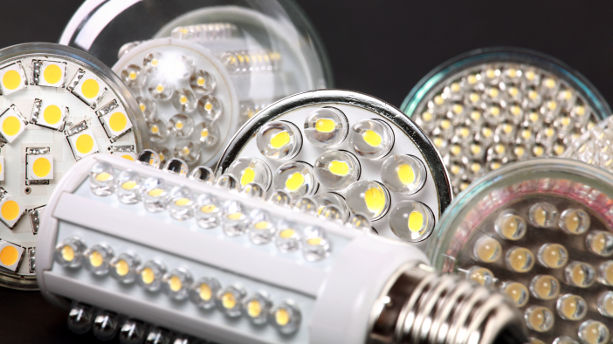
LED lighting manufactured or imported for sale in the United States must comply with various regulations and standards. On top of that, there are also voluntary standards that in practice are required.
This guide explains how regulations such as 47 CFR Part 15, 10 CFR Part 305, and RoHS, are relevant to LED lighting products. In addition, we also cover relevant UL standards and explain the importance of lab testing before selling LED lighting.
Content Overview

FREE CONSULTATION CALL (US, EU & UK)
- Request a free 30-minute call with Ivan Malloci to learn how we can help you with:
- Find product requirements
- Certification and labeling
- Lab testing
47 CFR Part 15 – Radio Frequency Devices
47 CFR Part 15 establishes requirements for electronic devices emitting radiofrequency energy between 9 kHz and 3,000,000 MHz, which generally includes LED lighting products. Ensuring compliance with 47 CFR Part 15 – Radio Frequency Devices often involves the following:
a. Making sure the products comply with relevant standards
b. Go through the necessary authorization procedure.
c. Providing a user manual, technical report, and other necessary documentation
d. Affixing the necessary label on the product and its packaging
Unintentional radiators

Unintentional radiators generate radiofrequency energy used within the device but do not intend to emit energy via induction or radiation. Most lighting products, including LED products, are unintentional radiators.
Here we list the main requirements for unintentional radiators:
- Undergo the Supplier Declaration of Conformity (SDoC) authorization procedure
- Ensure compliance with FCC rules via lab testing
- Draft an SDoC compliance information statement
- Maintain test reports and user manuals
- Provide technical documentation
- Provide proper labeling
Intentional radiators
Intentional radiators are made to purposefully generate radiofrequency energy via induction or radiation. Lighting devices that have Wi-Fi or Bluetooth capabilities are generally considered to be intentional radiators and thus must comply with requirements, such as:
a. Undergo the certification procedure, by filing a grant of certification with a Telecommunication Certification Body (TCB)
b. Comply with relevant rules and standards (e.g. ANSI C63.10.2020), by ensuring that the device is lab-tested by an FCC-recognized accredited testing lab
c. Submit a technical report
d. Label the product (FCC identifier and compliance information statement)
Seasonal and decorative lights: 16 CFR Part 1120 – Substantial Product Hazard List
16 CFR Part 1120 covers products that have characteristics that can cause a substantial risk of injury to consumers. 16 CFR Part 1120 also covers decorative lighting with the following characteristics:
- Nominal input voltage of 120 V
- Portable
- Connected by a plug
- For temporary use
This includes products such as:
- Stars
- Wreathes
- Candles without shades
- Light sculptures
- Plastic blow-molded figures
- Animated figures
Products outside the scope of 16 CFR Part 1120
16 CFR Part 1120 also lists products that are not covered. Here are some examples:
- Products with batteries
- Solar-powered products
- Products that use a transformer or low-voltage power supply
- Portable lamps used to illuminate the seasonal decorations
UL 588 – Standard for Safety for Seasonal and Holiday Decorative Products
Covered products (e.g. stars) are deemed to be substantial product hazards if they do not comply with the requirements of UL 588, which is incorporated under 16 CFR Part 1120.
These requirements concern the following characteristics:
- Minimum wire size
- Sufficient strain relief
- Overcurrent protection
10 CFR Part 430 – Energy Conservation Program for Consumer Products
16 CFR Part 430 is a regulation within the Energy Policy and Conservation Act (EPCA) and sets test procedures and energy conservation standards for certain types of consumer products, such as LED and OLED light products.
For example, Appendix BB to Subpart B sets a uniform test method for the following specifications of LED lamps:
- Input power
- Lumen output
- Lamp efficacy
- Correlated color temperature
- Power factor
- Time to failure
- Standby mode power
Examples of covered products include:
- Integrated and non-integrated LED lamp
- OLED lamp
- LED downlight retrofit kit
10 CFR Part 429 – Certification, Compliance, and Enforcement for Consumer Products and Commercial and Industrial Equipment
10 CFR Part 429 establishes certification and compliance requirements for products covered by 10 CFR Part 430, and 10 CFR Part 431
Manufacturers must create a certification report containing the information such as:
- Product or equipment type and class
- Manufacturer’s name and address
- Private labeler’s name and address (if applicable)
- Brand name
- Basic model number and manufacturer’s individual model number
- Whether it is a new or discontinued model
- Test sample size (number of units tested for the basic model)
- Product-specific information
16 CFR Part 305 – Energy Labeling Rule
16 CFR Part 305 sets energy labeling requirements for consumer products that include general service LED or OLED lamps.
According to 16 CFR Part 305.5, LED or OLED are considered general service lamps, and so, must include information such as the following in their label:
- Light output of each lamp (expressed as “Brightness”)
- Estimated annual energy cost (expressed as “Estimated Energy Cost” per kWh)
- Life of each lamp (expressed in years)
- Correlated color temperature of each lamp (expressed as “Light Appearance”)
- Wattage of each lamp (expressed as energy used)
- Design voltage of each lamp, if it’s not 120 volts
- A “Contains Mercury” statement, if it contains mercury
You can refer to prototype labels 5, 6, and 7 in Appendix L to 16 CFR Part 305 for more details.
Part 305 may require products to undergo testing to determine the values necessary for the label, such as:
- Energy efficiency rating
- Light output
- Energy usage
UL Standards
Even though UL standards are voluntary, unless they are incorporated by reference in a regulation, you are still required to ensure your products are safe. Thus, in practice, you must make sure your products comply with relevant safety standards.
Additionally, marketplaces such as Amazon might require your LED product to comply with the relevant standard, or else it might not accept or list your product.
Here are a few UL standards relevant to LED products:
| Title | Description |
| UL 8750 | This standard covers requirements for LED equipment for use in lighting products |
| UL 8753 | This standard specifies requirements for, and covers, field-replaceable LED light engines |
| UL 588 | This standard covers safety requirements for seasonal and holiday decorative products, including light sculptures |
RoHS
Some states regulate certain electronic products under RoHS state laws. This includes:
- California
- New Jersey
- Illinois
- New
- Rhode Island
- Wisconsin
While requirements are different according to the state, in general, they concern substance restrictions, reporting and registration.
Here are some examples of restricted substances:
- Lead < 0.1%
- Cadmium < 0.01%
- Mercury < 0.1%
- Hexavalent Chromium < 0.1%
- PBBs < 0.1%
- PBDEs < 0.1%
Lab Testing
You often need to have your product tested to prove it complies with relevant requirements, such as electromagnetic compatibility or substance restrictions.
Some regulations may require product testing. However, you might still need to ensure your product is safe, so, ensuring your product undergoes testing using UL standards is a practical necessity.
| Regulation | Lab testing |
| 47 CFR Part 15 – Radio Frequency Devices | You should ensure that your products are tested against relevant standards such as ANSI C63.10 or ANSI C63.4 |
| UL standards | UL standard compliance may include different requirements and tests according to the product.
For example, it could be requirements concerning electrical safety, electromagnetic compatibility, mechanical safety, and more |
| 10 CFR Part 430 | You should ensure that your product undergoes the necessary testing, for example, in order to determine factors such as time to failure or lumen output. |
| 16 CFR Part 305 | Testing is generally required to assess the values that must be affixed in the label, such as energy efficiency rating. |
| RoHS | Your product should undergo testing to ensure that it does not contain any substance above permitted limits. |
LED light products testing companies
We list below a few companies that offer to test light products, such as LED products, in the United States.
- Bureau Veritas
- QIMA
- TÜV SÜD
- CSA Group
- TetraInspection
- FusionOptix
Additional Requirements
Here are a few more regulations, and explanations regarding their relevance to LED products.
| Regulation | Description |
| Country of Origin | Consumer products, including LED light products, must carry a Country of Origin marking.
For instance, if the product is manufactured in China, the marking must state: “Made in China”. |
| Toxic Substances Control Act | The TSCA regulates certain substances that can be found on components or parts, such as persistent, bioaccumulative, and toxic (PBT) substances, which are commonly found in plastics.
Thus, you should test your product to ensure that it does not contain restricted substances above the limit. |
| California Proposition 65 | LED lighting products might contain substances on the Proposition 65 List, such as phthalates and cadmium.
You must therefore have your products tested to ensure they either don’t contain those substances above the set safe harbor levels. |
Recommended articles
- Country of Origin Requirements in the United States: An Overview
- Toxic Substances Control Act (TSCA) for US Importers: A Complete Guide
- California Proposition 65 Guide for US Importers & Amazon Sellers
Risks
LED lighting products manufactured overseas are not exclusively made to comply with US standards and regulations. For example, most LED products manufactured outside the United States are not UL tested, or even designed to pass UL testing. This can also be said about FCC compliance and energy efficiency requirements.
The bottom line is that compliance and general safety cannot be taken for granted when importing LED lighting to the United States. Most LED lighting products are manufactured for other markets and are not designed to comply with US regulations and UL standards.
It’s therefore critical to work with manufacturers that have a solid compliance track record of exporting compliant LED lighting to the United States – and follow up with third-party testing before shipping LED lighting products into the United States.





















Everything is clear to me now after reading this blog. Indeed informative and reliable. Thank you for posting this, great work.